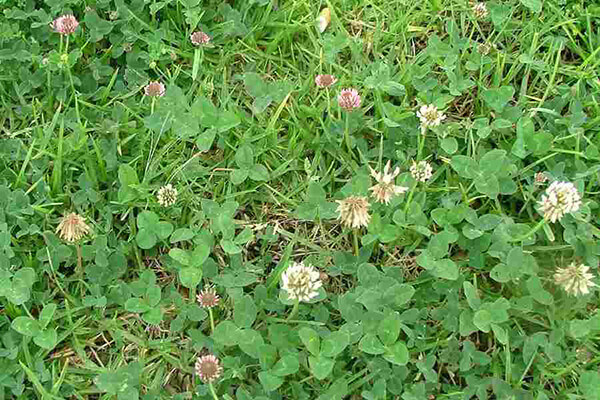
White Clover Weed (Trifolium repens)
Common Names
Also known as: clover, Dutch clover, honeysuckle clover, ladino clover, purplewort, shamrock, white Dutch clover, white trefoil.
Description
White clover is a creeping, low-growing herbaceous plant that can be annual or perennial. It spreads along the ground with rooting stems and produces upright flower stalks reaching 10–30 cm tall.
Key Features
- Grows close to the ground, spreading via creeping stems (stolons).
- Leaves are trifoliate (three leaflets) with distinctive pale green v-shaped markings.
- Small white or pale pink pea-shaped flowers form dense, round clusters at the tops of slender stalks.
- Tiny seed pods remain hidden within the dried flower parts.
Growth and Reproduction
White clover spreads through both seeds and creeping stems. It thrives in cooler seasons, especially in winter and spring.
Similar Species
May be mistaken for strawberry clover (Trifolium fragiferum), subterranean clover (Trifolium subterraneum), clustered clover (Trifolium glomeratum), and woolly clover (Trifolium tomentosum).
